Varicose Vein Ablation Therapy
WHAT TO EXPECT ON THE DAY OF YOUR VEIN
PROCEDURE?
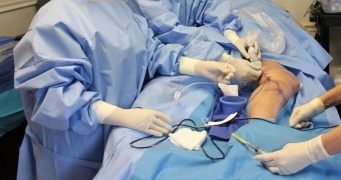
- You will be at the office for
about 2 hours - The procedure takes about 30
min - The rest of the time involves
checking in, prepping, imaging, bandaging - A relaxing medication is
prescribed the day before by our office. Take it as prescribed - Shower and shave the operative
leg the night before - Do not use lotions, creams.
- You will need a ride to and
from the office; if you decide not to take any sedatives for the procedure, you
may drive yourself - Bring your bandages/compression
stockings - Take all your medications.
Procedures

The treatment of venous
insufficiency starts with Ablation of large, deeper veins: Great
saphenous vein and Small Saphenous vein.
RFA ablation and Laser
ablation are performed
- The large, deeper veins are located inside your muscle, not
visible to you, and detected by ultrasound. - These large veins should always be treated first, before the
spider veins; not treating them first will lead to recurrence of the
superficial, cosmetic, spider veins, in the same location or different - Most insurances cover these procedures, named ablations
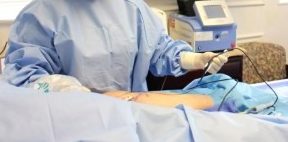
- Ablations are medical
treatments, aiming to decrease venous complications, such as clots, cellulitis,
and to relieve symptoms.
- They do not result in major
improvement of cosmetic appearance, unless the disease is caught very early
- The second part of the
treatment consists of “cosmetic” therapy of Spider veins and Varicosities.

Procedures performed are
- Laser cosmetic sclerotherapy
- Chemical sclerotherapy
- Phlebectomy
- Being directed towards cosmetic
appearance, these procedures are not covered by insurances

Cosmetic laser therapy, Dornier
laser
Vein procedures are performed
under strict sterile conditions and under Ultrasound guidance
Ultrasound imaging is locating
the vein and the desired position of the catheter tip to begin the treatment
Local anesthesia is given at
the point of entry into the vein, felt as a bee sting and burning sensation.
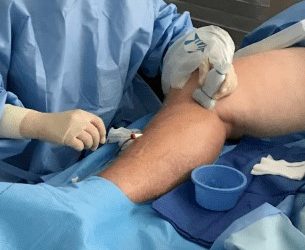
The ablation catheter
The catheter is inserted into
the vein and advanced under Ultrasound guidance to the uppermost segment
of the vein- the groin or behind the knee, depending which vein is treated
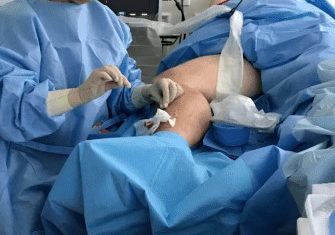
Diluted anesthetic fluid is
injected into the area surrounding the vein
This numbs the leg providing a
layer of protection outside the vein
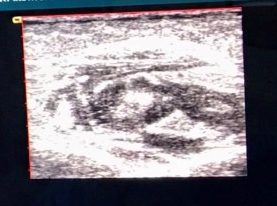
Ultrasound image of the tumescent fluid surrounding the vein
The catheter delivers heat
(RFA) or bursts of energy (laser) to the vein wall, shrinking and collapsing
the vein
RFA and Laser ablations follow
the same technique, using different types of catheters. Choosing one technique
over another depends on your vein anatomy, size, tortuosity. Both techniques
end in the same results.

Vein ablation
Love your healthy legs
WHAT
TO EXPECT AFTER A VEIN PROCEDURE?
Post
Vein ablation
- Wear the compression hose
continuously for 2 days, then during all waking hours for 2 weeks. - Elevate the treated leg
whenever seated. - Walk every hour for a few
minutes. Also add a 20-30-minute walk daily if able. Walking is strongly
encouraged. - Ambulatory Phlebectomy:
you can remove the Coban (disposable ace wrap) in the first 24 hours.
Leave the support hose on continuously for the 2 day period then for 2
weeks during waking hours. - Band-Aids, Tape, and Gauze:
Remove the tape and gauze after 1 day. - Take Ibuprofen 400 mg in am and
400 mg pm, for 5 days; this will decrease the normal inflammatory response
and discomfort post procedure.
Post
procedure symptoms
- Pain: may experience mild
to moderate discomfort following the procedure. The leg may be tender to
the touch after treatment; it is normal to experience some tenderness or
bruising in the areas where local anesthesia was administered. This pain
responds well to Ibuprofen - Transient bruising: some patients
may notice some mild bruising or discoloration after treatment. This
discoloration is almost always transient and will resolve in about 3-4
weeks. In rare cases, this darkening of the skin may persist up to a year. - Leg/Ankle Swelling: may occur
especially after treating large varicose veins. It usually resolves in a
few days but may last a few weeks. Wearing the prescribed compression hose
and elevation will help lessen the swelling. If uncomfortable, a small
dose of diuretic will be prescribed - Some patients may
experience a “pulling” or “tight” sensation 1-3 weeks after the procedure.
This is the effect of the treated area healing. Occurs mainly when treated
vein is close to the skin and there is minimal fat tissue around. - Discoloration of the skin along
the treated veins. This may last several months. - Superficial thrombophlebitis: .
You may feel a small cord under the skin, with redness and warm
sensation. Call us and ant inflammatory drugs such as ibuprofen,
antibiotics, or even blood thinners may be prescribed for a short period
of time
Restrictions
after the procedure
- Driving: You need someone to
drive you to and from the office on the day of the procedure, due to
sedatives administered. Drive as tolerated after the first day. - Activities: You should be
walking hourly. - Heavy Lifting Restrictions: No
heavy lifting or straining for 1 week after the day of the procedure. - Bathing: Sponge baths only for
the first 1 day. - Work: You may return to work
next day after the procedure. - Sports/Exercise: 1 week from
the day of the procedure. - Sexual Activity: Whenever
comfortable. - Diet: Resume normal diet.
- Flying: Allowed 1 week after
the procedure. We advise compression stockings for flight longer
than 4 hours.
